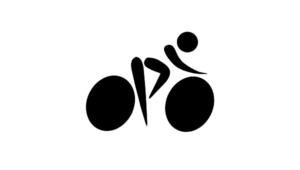By Design & Digital Associate Elaine Benoit
Have you ever heard that the human attention span has shrunk to less than that of a goldfish? Whether this is true or not, most of us are aware of how constant consumption of media has ultimately affected our daily lives. Bite-size information is being aggressively pumped out from a plethora of social media platforms, and we are swept into an endless feedback loop of instantaneous reactions. … Phew!
It can be extremely overwhelming to navigate this information overload, and even more difficult to be recognized among content that is scrolled past and skimmed over. People only expect easily consumable bits of relevant information. So, how is your company supposed to compete? How do you cut through the clutter? You don’t want to swim aimlessly in the fishbowl.

Seeing Is Believing
Generally, about 93% of communication is considered nonverbal. The part of our brain that is responsible for long-term memory is the part that remembers images. Visual communication can help your audience retain information longer and form stronger connections with your brand and message. When we say visual communication, we are talking about things such as fine art, videos, infographics, slide deck presentations, brochures, billboard ads and so much more. You can use visual language to evoke emotions and project tone by, for instance, your choice of specific typefaces or use of colors.
People often find images relatable, which is also why authentic visuals are proven to be more successful than the use of stock imagery. What you put out there needs to be tailored specifically for your audience. You don’t want to appear repetitive, boring or out of touch. It’s important to have a strong marketing strategy in place for visual elements to support. While visual communication can be highly effective, if your marketing message is not well crafted and targeted, your brand will ultimately suffer.
“A picture can paint a thousand words.”– Frederick R. Bernard
This poetic cliché speaks a universal truth: You are fluent in a language that you are probably not even aware of – reading imagery. Illustrator Christopher Niemann comically recognizes this art of speaking without words in his TED talk, pointing out that no one really taught you, but you do it more often than you know. As a child you would draw a circle and five lines and we understand that this is a hand. The fact that people are incredibly good at interpreting imagery and filling in the blanks makes the job of a designer a bit easier. We have the power to convey a complex idea and communicate it in a very simple form that you are able to immediately understand. The most obvious example is iconography. Do you use emojis when you are texting? If you received a text with maybe an airplane or a car, you know that these images do not simply communicate what they are in actuality, an airplane and a car, but the entire concept of travel.
✈️ 🚘
An example of visuals affecting how you feel could be the range of internet signal symbols on your phone. Depending on the signal, it might evoke certain emotions of fear, frustration, comfort and relief.
Take this image for example: you see a person riding a bike, correct? But, is there actually a bike? There are really only two ovals drawn and the image of the bike is made up by your mind.
Well, maybe there are some clever visual hints in there. But you get the idea. You have an innate and highly intellectual understanding of visual language. So, how much information do you really need to convey to get your message across? The answer is just enough. Visuals are a communication shortcut. You can save time and say more with less.
“The deeper something is etched into your consciousness, the fewer details you need to have an emotional reaction.”– Christopher Niemann
Overall, it is essential that designers have an understanding of the visual and cultural vocabulary of a particular audience. Niemann confirms that possibly the most important skill for a designer is empathy, because the magic doesn’t happen on a piece of paper or behind a tiny handheld screen, that magic spark is ignited in the eye of the beholder. Touching the mind of the viewer is the goal. We do our job better by becoming better observers. Our role is to be aware of what people expect and what they already know and make our design intentions meet these two things.
Why Is Visual Communication Important?
More information is consumed today than ever before at a much faster pace. You want your company and message to stand out in the crowd, which is why understanding how to communicate visually is key. Not only can visuals help you present something in an attractive way, but in a way that is more digestible and easier to understand. If you are dealing with a topic that is particularly dry, visuals can enhance your message and give it the appeal you need to reach more of an audience. Visuals build brand recognition, that is, with consistent standards such as colors, text, images and designs that reflect your brand personality.
Your company should be taking advantage of the full spectrum of communication methods. If you are only doing part of the work, you cannot reap the full effect of the benefits.
Foster Marketing has a long-standing history of leveraging talented artists and designers, both internally and outsourced. Our team has ample resources to help you build upon your brand and message. Let Foster Marketing help you amp up your visual communication and marketing strategies. Call us at 281-448-3435, contact us online or connect with us on LinkedIn.



